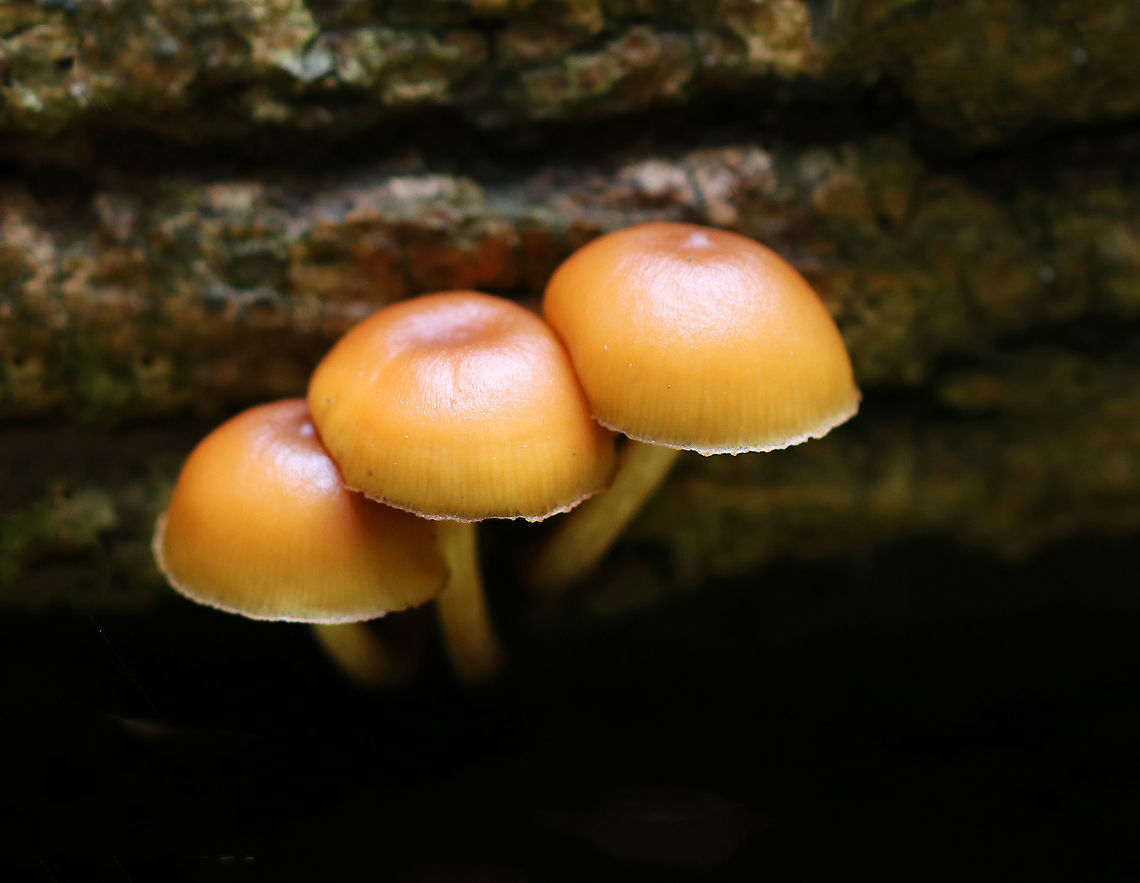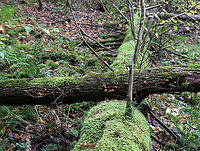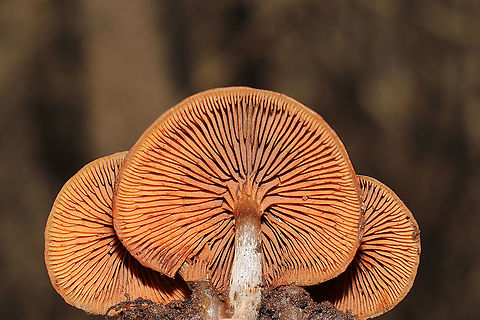 Promoted
Promoted
Funeral Bells - Galerina marginata
Cap: Convex; sticky; orange with slight two-toned appearance; slightly sunken, darker center; faintly lined margin
Gills: Brownish; close with frequent short gills; slightly decurrent
Stem: Dry; rusty-brown ring zone
Habitat: Growing in clusters out of a fallen, rotting, moss-covered tree in a bog
This species has the moniker "funeral bells", and is not a mushroom that you want to mess around with.
Galerina marginata has the same kind of toxins that the deadly Amanita species produce. These toxins, called amatoxins, are especially dangerous because they do not produce symptoms for 6-24 hours. Because of the delayed onset of symptoms, the sufferer may not realize that the mushroom they ate earlier is the cause of their illness. Initial symptoms resemble food poisoning, but gradually worsen for a few days until there is a short remission. Unfortunately, the symptoms return within 24 hours, and after another week or so, the liver and kidneys fail. This will result in death unless a liver transplant is performed.
There is a drug called Silibinin, which is derived from milk thistle, that may be useful in treating amatoxin poisoning - if it is administered soon after poisoning occurs.


"Galerina marginata", known colloquially as the funeral bell or the deadly skullcap, is a species of poisonous fungus in the family Hymenogastraceae of the order Agaricales.

comments (3)
Galerina marginata, also known as “funeral bells”, “autumn skullcap”, and “deadly galerina”, is a poisonous mushroom that is found throughout the Northern Hemisphere. Considering its dire common names, this is not a mushroom that you want to mess around with. It is definitely NOT edible. Galerina marginata is a “little brown mushroom”, which is the term used to describe small, brown mushrooms that are difficult to identify and are easily confused. Some little brown mushrooms are edible, while others definitely are not.
What makes Galerina marginata so deadly? It contains toxins, called amatoxins, which are especially dangerous because they do not produce symptoms for 6-24 hours after ingestion. Because of this delayed onset of symptoms, a person may not realize that their illness was caused by a mushroom they ate. And, therefore, they may not seek immediate medical attention—a fatal mistake. Initial symptoms resemble food poisoning, but gradually worsen for a few days until there is a short remission. At this point, the person assumes they are healed of this mysterious sickness. Unfortunately, the symptoms will return within 24 hours leading to liver and kidney failure. This will result in death unless a liver transplant is performed. If treated very early, there is a drug called Silibinin, derived from milk thistle, which may be useful in treating amatoxin poisoning. But, there is no guarantee of survival, even with early treatment. So, it’s best to never eat a little brown mushroom in the wild, unless you are an expert and know exactly what you’re ingesting! {Spotted in New York, USA by JungleDragon moderator, Christine Young} #JungleDragon Posted 6 years ago